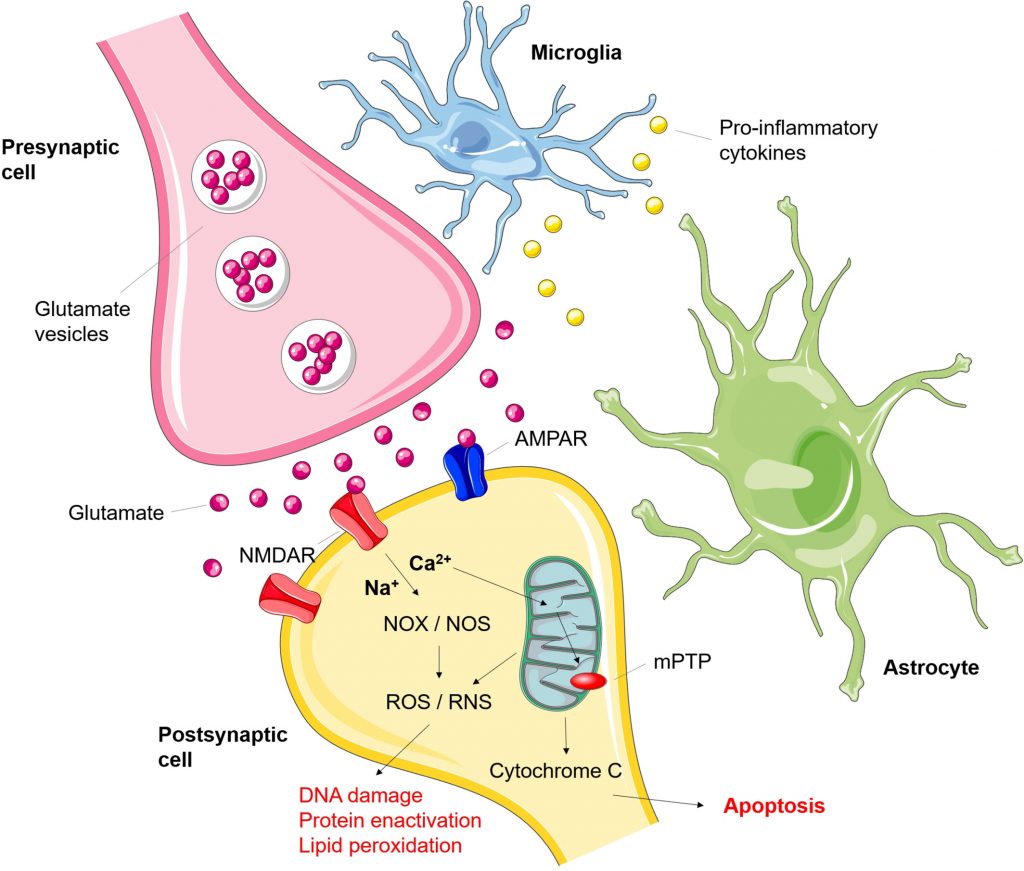Authors: Dora Kolić, Zrinka Kovarik
Abstract
Acute organophosphorus compound (OP) poisoning induces symptoms of the cholinergic crises with the occurrence of severe epileptic seizures. Seizures are induced by hyperstimulation of the cholinergic system, but are enhanced by hyperactivation of the glutamatergic system. Overstimulation of muscarinic cholinergic receptors by the elevated acetylcholine causes glutamatergic hyperexcitation and an increased influx of Ca2+ into neurons through a type of ionotropic glutamate receptors, N-methyl-d-aspartate (NMDA) receptors (NMDAR). These excitotoxic signaling processes generate reactive oxygen species, oxidative stress, and activation of the neuroinflammatory response, which can lead to recurrent epileptic seizures, neuronal cell death, and long-term neurological damage. In this review, we illustrate the NMDAR structure, complexity of subunit composition, and the various receptor properties that change accordingly. Although NMDARs are in normal physiological conditions important for controlling synaptic plasticity and mediating learning and memory functions, we elaborate the detrimental role NMDARs play in neurotoxicity of OPs and focus on the central role NMDAR inhibition plays in suppressing neurotoxicity and modulating the inflammatory response. The limited efficacy of current medical therapies for OP poisoning concerning the development of pharmacoresistance and mitigating proinflammatory response highlights the importance of NMDAR inhibitors in preventing neurotoxic processes and points to new avenues for exploring therapeutics for OP poisoning.

The article is available at the following link.

Comments